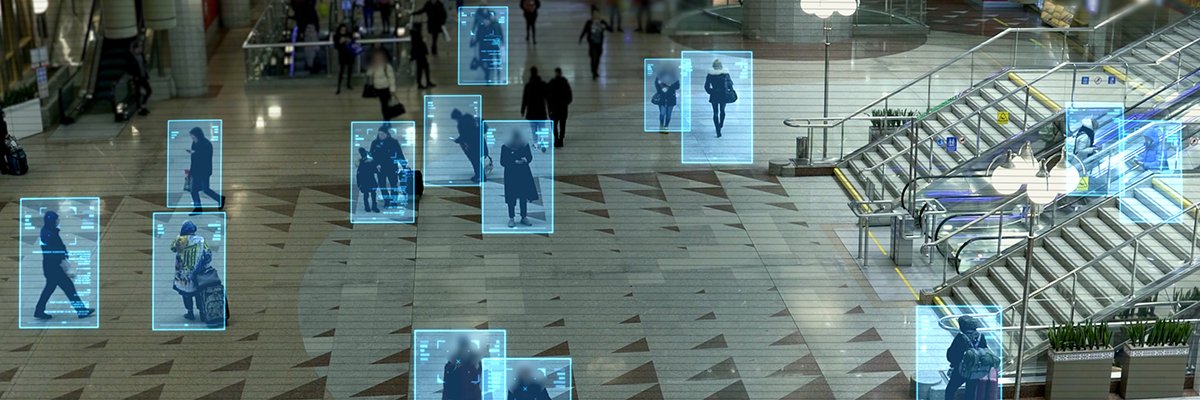
Amazon claims the FBI’s use of its Rekognition image and video analysis software does not violate its mortarium on sales of facial-recognition technology to US law enforcement agencies, because it only ever applied to police forces when conducting criminal investigations.
Along with Microsoft and IBM, Amazon imposed a one-year moratorium on police use of its facial-recognition software in June 2020 following intense international backlash over the police killing of George Floyd a month earlier.
While US police departments seemed to be completely barred from using the technology in any instance, Amazon said it would allow some non-law enforcement organisations to continue using its Rekognition software.
“We’re implementing a one-year moratorium on police use of Amazon’s facial-recognition technology. We will continue to allow organisations like Thorn, the International Center for Missing and Exploited Children, and Marinus Analytics to use Amazon Rekognition to help rescue human trafficking victims and reunite missing children with their families,” it wrote at the time in a short, two-paragraph blog post.
Initially put in place for a year, Amazon later extended the moratorium indefinitely in May 2021 without explanation.
However, in January 2024, FedScoop uncovered an updated ‘AI use case’ inventory published by the US Department of Justice (DoJ), which disclosed that the FBI is using Amazon Rekognition under ‘Project Tyr’; a designation that refers to the Norse god of war.
A summary for the project – which did not explicitly mention the tool’s facial recognition capabilities – noted that “Amazon Rekognition offers pre-trained and customisable computer vision (CV) capabilities to extract information and insights from lawfully acquired images and videos”, and that it will be customised to “review and identify items containing nudity, weapons, explosives, and other identifying information”.
While the inventory provides some further detail about the software being purchased off-the-shelf “pre-built” from a third party, it also shows that many aspects of the project – including where the training data will originate from and which specific AI techniques will be used – are yet to be finalised.
According to the publicly available documentation for Rekognition on Amazon’s website, customers can use the tool to detect and analyse a range of visual information using a variety of application programming interfaces (APIs).
These APIs are broadly provided in two sets, one for image analysis and another for video, but each action requires the customer to have the right permissions to call the API in a certain way.
When looking to detect an object such as a car or a gun, for example, Amazon’s customers can call the DetectLabels API to return information about, for example, the object, the level of confidence the software has in the labels assigned to the object, and possible other names for that object. The customer would therefore not be able call that API to return information about people’s faces, which would require “permissions to perform the rekognition:DetectFaces action”.
Computer Weekly contacted the FBI for further information on its use of Amazon Rekognition – including what APIs it has access to and whether this means it can use the facial recognition capabilities – but the agency declined to comment on any aspect of the story.
Computer Weekly also contacted Amazon to clarify whether its police facial-recognition moratorium extends to federal law enforcement agencies like the FBI; whether the company has in any way restricted the agencies access to APIs that would enable it to utilise the tools facial-recognition functions; and if local or state police would be able to access to these capabilities via the FBI.
“We imposed a moratorium on police departments’ use of Amazon Rekognition’s face comparison feature in connection with criminal investigations in June 2020, and to suggest we have relaxed this moratorium is false,” said an Amazon spokesperson.
“Rekognition is an image and video analysis service that has many non-facial analysis and comparison features. Nothing in the Department of Justice’s disclosure indicates the FBI is violating the moratorium in any way.
“As we’ve said many times, and continue to believe strongly, companies and government organisations need to use existing and new technology responsibly and lawfully. We also believe that governments should put in place regulations to govern the ethical use of facial-recognition technology, and we are ready to help them design appropriate rules, if requested.”
The spokesperson also pointed to Amazon’s terms of service for Rekognition, which reiterates the point that its moratorium is limited to the use of face comparison by police in criminal investigations and “does not apply to use of… [the] feature to help identify or locate missing persons”.
The terms of service added that any “law enforcement agencies… [using] Rekognition for criminal investigations must provide a public disclosure describing their use of facial-recognition systems.”
Using Wayback Machine to check the Amazon terms of service in the wake of the moratorium announcement on 10 June 2020, the “criminal investigations” caveat only appears in web captures from 26 June onwards. A capture from two days prior on 24 June shows no mention of the moratorium.

Comentarios recientes